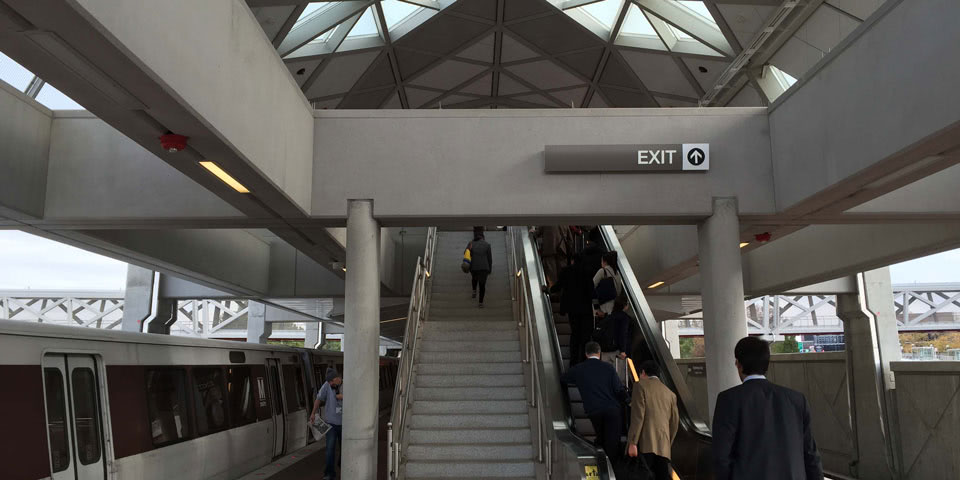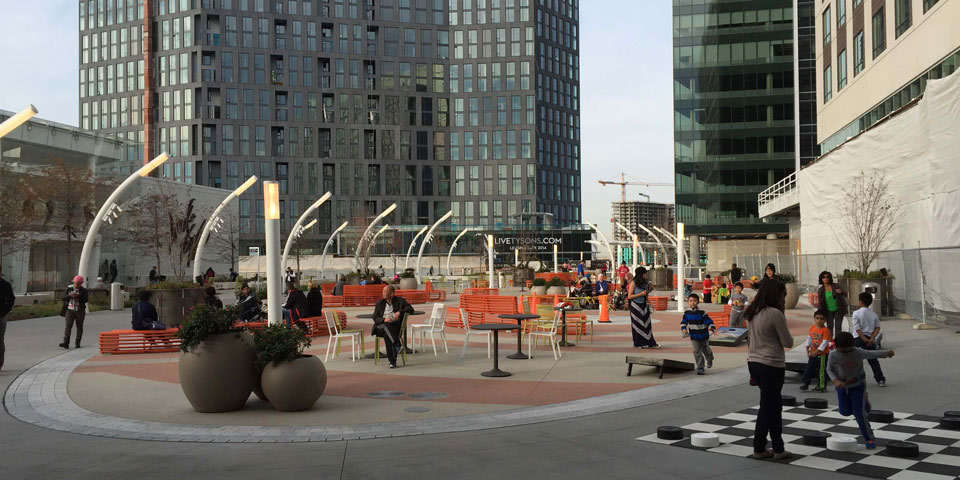
Technology and Transit: Strengthening TOD With GIS (Part 4)
I was very excited to ride the Silver Line, DC’s newest metro line on a beautiful day about three months after its opening in July. I hoped to see how this metro line works in connecting people and places in real life. I also wanted to evaluate the accuracy of my GIS model compared to my riding experience.
I started my Silver Line trip at the L’Enfant station in DC and hopped in a train westward to the Wiehle-Reston East station. It took me about 50 minutes to reach the last of 5 new silver stations. I was quite amazed by the booming scene I saw along the new rail line. Cranes were everywhere and developers were breaking ground on new high-rise apartments and office buildings. The car was not packed but it was definitely not empty either at a weekday off peak hour. According to the Metro, the Silver Line ridership showed strong number in the first two months. On September 24th, WMATA announced 30,000 combined trips are being taken to or from Silver Line stations on weekdays. “The new line is already performing at 60 percent of its projected ridership for the end of the first full year of service.”
As I got off the train, I saw a big construction site with a huge “Reston Station” sign. It is a mixed use project and a multimodal transportation hub as well with bus transfers, secure bike spaces and a big car garage. I entered a nicely designed civic plaza, which is connected by a bridge directly to the Wiehle-Reston station. By following the signage, I found the covered bus station underneath the plaza. The facility has a very urban and modern look. After waiting for about three minutes, I boarded a Fairfax Connector Route 505 bus and arrived at Reston Town Center in less than 10 minutes. The entire trip from downtown DC to Reston Town Center took me about one hour. It is basically in line with the GIS model result, which showed that most of downtown DC was within a 90 minute transit shed from Reston Town Center.
It was quite a pleasant riding experience, and the facility design is functional and impressive. I look forward to the opening of Reston Station project in 2015. This project exemplifies the design solution to multi-modal urban transportation as a transit-oriented development. I believe the new transportation system will offer travel alternatives including riding the Metrorail, buses and biking, allowing people to move about without using their cars.
On my way back to DC, I stopped at the Tysons Corner station and visited the newly opened Phase 1 of the expanded Tysons Corner Center. Thanks to the silver line, I spent only 12 minutes from Reston to Tysons Corner, which makes them really feel like they are neighboring communities. RTKL led the master planning and rezoning effort for this very exciting project. The center piece of the entire expansion project is The Plaza. It is a great gathering place and a very popular urban open space, serving as the new front door to Tysons Corner Center. We can see clearly the transformation of the areas along the Silver Line is underway. The new metro line connects the region’s second largest economic hub, Tysons to downtown DC by mass transit and will fuel the economic development for the Northern Virginia region.
I decided to expand my focus and run a similar analysis for Tysons Corner. I would like to include the maps, information and analysis conclusions for Tysons Corner in my final Kagan submission. From my experience, I feel that great efforts have been made to improve the transit connectivity in northern Virginia. The goal is to provide people with alternatives and allow them to move about without driving their cars. This will help change the lifestyle and build a more sustainable and livable metropolitan area. I hope my research will help us better understand the benefits and convenience that transit can bring and will allow us to come up with good design solution to shape a more transit-friendly future.


